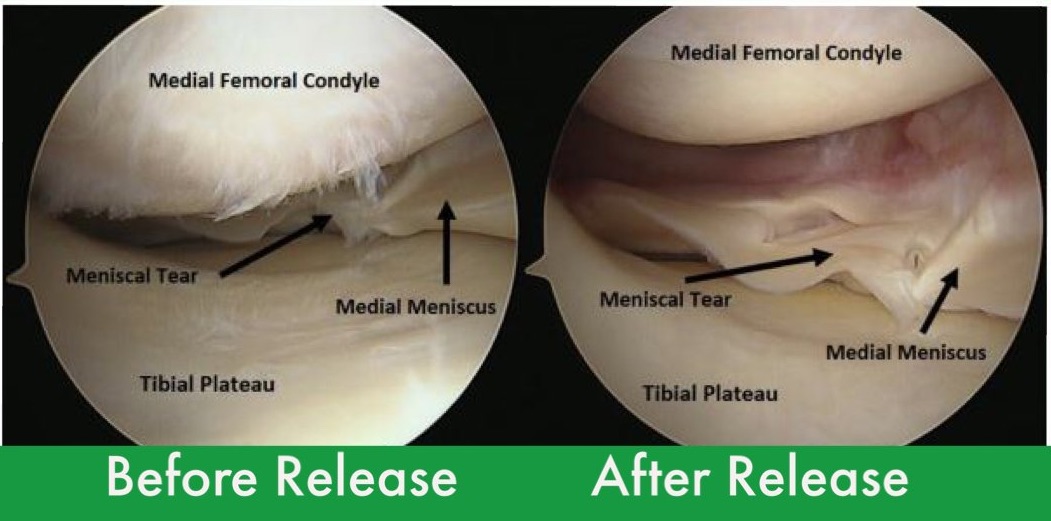‘Pie-crusting’ the MCL – the right way to reach the back of the medial compartment safely!
“Need Room to Operate? Partial and Intentional Release of the Knee Medial Collateral Ligament for Medial Meniscal Surgery”
James H. Lubowitz, Michael J. Rossi, Jefferson C. Brand
Arthroscopy 2020; 36(6): 1487-1488
The lead editorial article in June’s edition of the Arthroscopy journal focusses entirely on the technique of partial release of the medial collateral ligament at the time of arthroscopy. Perforating the MCL with multiple holes percutaneously with a needle while appying a valgus stress creates a partial release of the ligament that is akin to a ‘sprain’ of the ligament. This opens up the joint into just very slight valgus, thereby opening up the medial comparment by a few additional millimetres.
This technique takes no more than 1 – 2 minutes, and it is easy, with extremely low risks of any potential morbidity. It allows much clearer visualisation and access to the posterior aspect of the medial compartment at arthroscopy, allowing proper and full evaluation of tears to the posterior horn of the medial meniscus and proper surgical treatment of whatever pathology might be found in this area. Importantly, it also drastically reduces the potential risk of accidental iatrogenic articular cartilage damage whilst trying to access a tight space at the back of the medial compartment.
The partially released ligament heals up absolutely fine on its own (just like a minor MCL sprain does), and research has shown that it does not cause any residual laxity in the ligament or any other significant adverse consequences.
The terms that is often used for this technique is ‘pie-crusting of the MCL’, and it is something that I use on a not-infrequent basis in my practice, for example for medial meniscal repairs or meniscal trimming, but particularly for more technically demanding procedures such as ramp lesion repairs, meniscal root avulsion repairs and meniscal allograft transplantation. This technique should be a routine part of the toolkit of every soft tissue knee surgeon!

CLICK HERE to read more…
